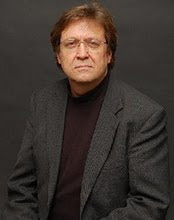For as long as I can remember, Albany’s plan for economic development has always centered on building up, or rejuvenating specific geographical sections of our community. When I was a kid, the buzz was all about expansion efforts in Northwest Albany. The Albany Mall, Wal-Mart, and a host of mini-strip outlets, slowly drove the vast majority of shoppers and businesses away from our core, and out to the burbs and beyond. All was well.
The future seemed bright until we turned around to see the big empty spot where retail was once king; Downtown Albany. As businesses left there, government and professional offices moved in. Vital aspects of our city to be sure, but not the sort of development that one can get excited about. Then SPLOST money and other government funded programs gave us a “new” downtown. The multi-million dollar Flint Riverquarium, Ray Charles Plaza and the riverfront improvements, The Hilton Garden Inn, upgrades at Thronateeska Heritage Center, including a one-of-a kind planetarium, and a revitalized CVB Welcome Center at the Riverhouse, all played a role in our efforts to turn Downtown Albany back into the center of social and economic strength it once was.
Yet, we still struggle. True, this may not be the best time in the economy to take an honest look at how we are doing in Albany, but it’s not something we can put off. The offerings of the Northwest retail districts, Lee County, and Downtown Albany, all have merit and play a key role in our future. The problem is not the ideas, or the geography. The problem is the people. We just don’t have enough people, with enough money to spend here, to keep all segments busy at the same time.
With large plant closings, a rising crime rate, and other concerns, our population has steadily dropped. This leaves businesses and our attractions fighting for those remaining pocket books. If Downtown takes off like everyone hopes it will, there will be a drop in business somewhere else. We desperately need to attract new people to Albany, either as visitors, shoppers, or residents. That is the only way we will have real growth.
It’s never a good sign when regional attractions such as Chehaw and Riverquarium spend so much of their time, money, and effort to get the local community through the doors, and even to become a “member” of their organization. They are failing to understand that their real value to the community is not what they can do for us, but what they can do to attract visitors, dare I say, tourists, to the Good Life City.
I’ve used this example before, but it’s a good one. Back in the mid-90s I lived in St. Augustine, Florida. I served on the marketing committee of the St. John’s County Chamber of Commerce. Not once, in all the many development meetings I participated in, was there any concern given to how best to get the locals into the Wax Museum, The Spanish Fort, The Old Jail, or Ripley’s Believe It or Not Museum. They understood the basic math. Getting that demographic to spend money at the attractions was simply moving the local dollars around. It would add no new growth to the local economy. Their focus was on regional and national marketing programs and ad campaigns. That can be expensive, but it’s a certainty that any revenue generated was new money, not recycled money. Now, I’m not saying that we are on par with such a tourist centered economy as St. Augustine, but we can learn something from them.
Instead of our attractions all competing for local attention and wallets, they should combine their limited marketing budgets with the major hotels, restaurants, and the local arts institutions to develop a single message about Albany, and how we can be a great “weekend get-away”. That message should be delivered to the major cities around us like Tallahassee, Columbus, Jacksonville, Macon, Savannah, and even Atlanta. We should never hear about it. Those of us that have lived here for a long time, may not easily see what a great offering we have, but to those living in larger metropolitan areas, we make a great mini-vacation location to get away from the fast pace they are accustom to.
But our attractions and institutions do not work together to that mission. They see each other as competition, not partners. Nobody wants to surrender any control of their own message, so instead of having one powerful story to tell the outside world, we have half a dozen short stories we keep telling ourselves over and over, wondering why things don’t change.
Albany’s historical, territorial attitude, that keeps us debating on which portion of our community we should support, leads to our collective loss in serious growth. Maybe these hard times will force us to speak with one voice that will put new dollars in our one pocket called Albany.

